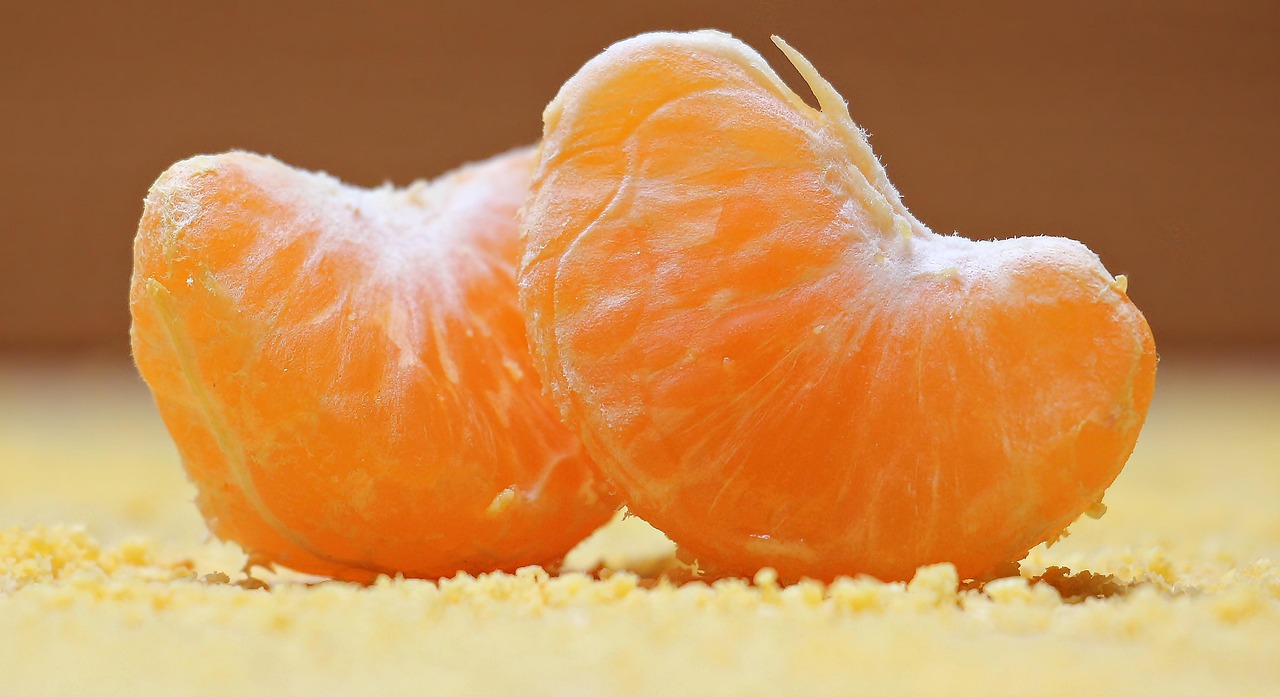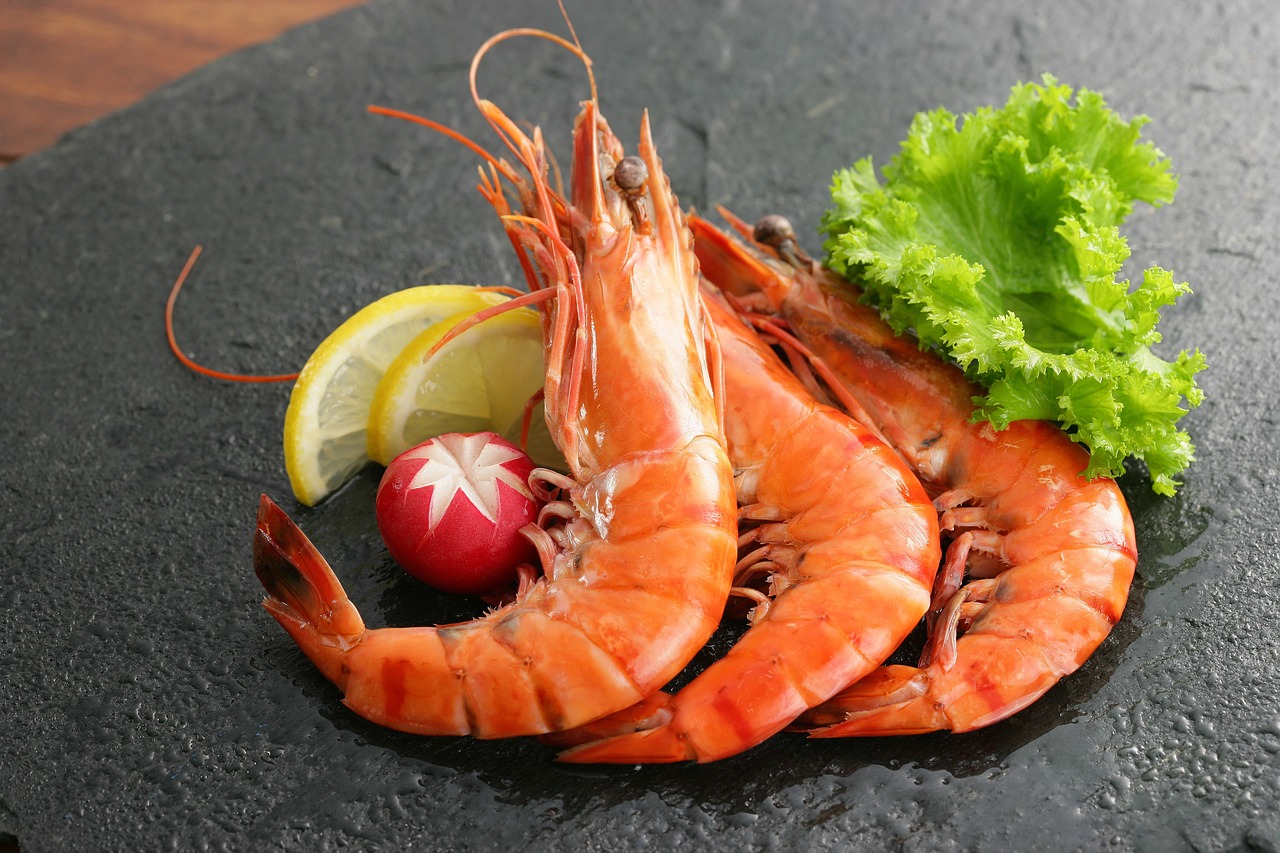Food And Drinks
Nothing Bundt Cakes: A Celebration in Every Bite

Introduction
Nothing Bundt Cakes has carved out a sweet spot in the hearts of dessert lovers across the United States with its signature Bundt cakes. Founded on the principles of quality ingredients, exceptional baking techniques, and a passion for celebration, this bakery chain has become synonymous with delicious cakes that bring joy to any occasion.
History and Founding
Nothing Bundt Cakes was founded in 1997 by Dena Tripp and Debbie Shwetz in Las Vegas, Nevada. The duo’s shared love for baking and desire to create irresistible desserts led them to develop their unique take on the classic Bundt cake. From its humble beginnings, the bakery quickly gained popularity, prompting rapid expansion across the country.
The Bundt Cake Experience
At the heart of Nothing Bundt Cakes’ success is its commitment to quality and craftsmanship. Each cake is meticulously crafted using real eggs, butter, and cream cheese, ensuring a rich and moist texture that keeps customers coming back for more. The cakes are available in various sizes, from bite-sized Bundtinis to larger Bundt cakes perfect for any celebration.
Signature Flavors and Variety
Nothing Bundt Cakes offers a delectable assortment of flavors to suit every palate and occasion. Whether you crave the classic Vanilla or Chocolate Chocolate Chip, or prefer the tangy delight of Lemon or Red Velvet, there’s a flavor to satisfy every craving. Seasonal offerings and specialty flavors add a touch of excitement, ensuring there’s always something new to discover.
Decorating and Personalization
One of the hallmarks of Nothing Bundt Cakes is its attention to detail in presentation. Each cake is elegantly adorned with the bakery’s signature buttercream frosting petals, creating a distinctive and inviting look. Custom decorations and personalized messages make every cake a unique centerpiece for birthdays, weddings, anniversaries, and corporate events.
Community and Customer Experience
Beyond its delicious cakes, Nothing Bundt Cakes prides itself on fostering a warm and inviting atmosphere in its bakeries. Exceptional customer service and a commitment to community engagement have endeared the brand to loyal customers nationwide. Whether you’re picking up a cake for a special occasion or treating yourself to a sweet indulgence, the bakery strives to make every visit memorable.
Expansion and Recognition
Since its inception, Nothing Bundt Cakes has expanded to over 300 locations across the United States, delighting customers with its consistently exceptional cakes and warm hospitality. The brand has received numerous accolades and awards, solidifying its reputation as a leader in the dessert industry.
Conclusion
Nothing Bundt Cakes continues to flourish as a beloved destination for cake enthusiasts seeking quality, flavor, and a touch of sweetness in their lives. With its commitment to baking excellence and customer satisfaction, the bakery chain remains a testament to the enduring joy of celebrating life’s moments, big and small, with a delicious Bundt cake.
FAQs
- What makes Nothing Bundt Cakes unique?
- Nothing Bundt Cakes stands out for its dedication to using high-quality ingredients like real eggs, butter, and cream cheese in every cake. Their signature frosting petals and wide variety of flavors also set them apart.
- Are Nothing Bundt Cakes’ cakes customizable?
- Yes, Nothing Bundt Cakes offers customization options for their cakes. Customers can choose from various sizes and flavors, and personalize cakes with decorations and messages tailored to special occasions.
- Does Nothing Bundt Cakes offer gluten-free or vegan options?
- Currently, Nothing Bundt Cakes does not have gluten-free or vegan cakes as part of their regular menu. However, they may offer special accommodations or options upon request at some locations.
- How can I order from Nothing Bundt Cakes?
- Orders can be placed directly through their official website, through their mobile app, or by visiting one of their bakery locations. Online ordering typically allows customers to specify flavors, sizes, and customization details.
- Does Nothing Bundt Cake cater for events?
- Yes, Nothing Bundt Cake offers catering services for various events including birthdays, weddings, corporate gatherings, and more. They can accommodate large orders and often provide delivery or pickup options.
- Where can I find a Nothing Bundt Cake bakery near me?
- You can locate the nearest Nothing Bundt Cake bakery using the store locator on their official website. Simply enter your zip code or city to find the closest bakery, along with contact information and store hours.
- What are some popular occasions to order a cake from Nothing Bundt Cake?
- Customers often order cakes from Nothing Bundt Cakes for birthdays, anniversaries, baby showers, weddings, holidays, office parties, and other special celebrations. Their cakes are known for making any occasion memorable.
- Does Nothing Bundt Cake offer promotions or discounts?
- Yes, Nothing Bundt Cake occasionally runs promotions, discounts, and special offers, especially during holidays and special events. Checking their website or signing up for their newsletter can keep you informed about current deals.
- Are there seasonal flavors available at Nothing Bundt Cake?
- Yes, Nothing Bundt Cakes introduces seasonal flavors throughout the year, offering limited-time options that reflect the flavors of the season. These seasonal cakes add variety and excitement to their menu.
- What should I do if I have a problem with my order from Nothing Bundt Cake?
- If you encounter any issues with your order, such as missing items or quality concerns, it’s best to contact the specific bakery where you placed your order. They can assist with resolving the issue promptly.
Food And Drinks
Orange Slices: Surprising Benefits & Creative Uses Need to Try

Ever wondered why orange slices are a staple at kids’ soccer games and high-end spas alike? This humble snack packs more than just a sweet-tangy punch—it’s a powerhouse of nutrition, a hydration booster, and a versatile ingredient. Whether you’re snacking, cooking, or looking for a natural energy boost, orange slices deserve a spot in your daily routine.
In this article, we’ll explore:
✅ The health benefits backed by science
✅ Creative ways to use orange slices (beyond snacking)
✅ Pro tips for selecting, storing, and serving them
✅ Unexpected uses in beauty and home hacks
Let’s peel back the layers and discover why orange slices are more than just a refreshing treat.
Why Orange Slices Are a Nutritional Powerhouse
Oranges are famous for their vitamin C content, but there’s much more beneath the peel. Here’s why nutritionists and athletes swear by them:
1. Immune-Boosting Vitamin C
A single medium orange provides 93% of your daily vitamin C needs (NIH), crucial for:
✔ Fighting colds and infections
✔ Collagen production for healthy skin
✔ Enhancing iron absorption
2. Hydration & Electrolyte Balance
With 87% water content, orange slices are a natural way to stay hydrated. They also contain potassium, helping regulate fluid balance and muscle function—perfect for post-workout recovery.
3. Fiber for Gut Health
The 3.1g of fiber per orange (USDA) aids digestion and keeps you full longer, making it a smart snack for weight management.
4. Antioxidants That Fight Inflammation
Oranges are rich in flavonoids like hesperidin, which studies link to reduced blood pressure and inflammation (Journal of Nutrition).
Beyond Snacking: 6 Creative Ways to Use Orange Slices
1. Upgrade Your Water
Add orange slices to:
✔ Infused water (with mint or cucumber)
✔ Iced tea for a citrusy twist
✔ Cocktails/mocktails (e.g., Aperol Spritz)
2. Sweet & Savory Recipes
✔ Salads: Toss with arugula, feta, and balsamic glaze
✔ Desserts: Bake into cakes or dry for homemade fruit chips
✔ Marinades: Mix with soy sauce, garlic, and ginger for grilled chicken
3. Natural Energy Booster
Skip sugary sports drinks—orange slices offer quick natural sugars + electrolytes, ideal for:
✔ Pre-workout fuel
✔ Midday slumps
4. DIY Beauty Treatments
✔ Face mask: Blend with yogurt for brightening
✔ Sugar scrub: Mix with coconut oil for exfoliation
5. Home Freshener
Simmer orange peels with cinnamon sticks for a chemical-free air freshener.
6. Kid-Friendly Fun
✔ Freeze slices for edible “popsicles”
✔ Use as cupcake toppers
How to Pick, Store & Serve Orange Slices Like a Pro
Choosing the Best Oranges
🔹 Navel oranges – Sweet, easy to peel (best for snacking)
🔹 Blood oranges – Tart, deep red flesh (great for juices)
🔹 Valencia oranges – Juicy, ideal for slicing
Look for:
✔ Firm, heavy fruit
✔ Bright, smooth skin (avoid green patches)
Storing for Freshness
✔ Whole oranges: Keep at room temp for a week or refrigerate for up to two.
✔ Sliced oranges: Store in an airtight container with a paper towel to absorb moisture (lasts 2–3 days).
Serving Tips
✔ Sprinkle with chili powder or tajín for a Mexican-inspired kick.
✔ Dip in dark chocolate for a healthy dessert.
The Bottom Line: Why You Should Keep Orange Slices Handy
Orange slices are more than just a snack—they’re a multipurpose superfood that boosts health, enhances recipes, and even simplifies home care. Whether you’re an athlete, a busy parent, or a cooking enthusiast, their versatility is unmatched.
Next time you grab an orange, slice it up—you might just discover a new favorite way to enjoy it!
Food And Drinks
No Sugar Added Cranberry Juice: A Healthier Choice or Just Hype?

Introduction
You grab a bottle of cranberry juice, thinking it’s a healthy choice—only to find out it’s packed with added sugars. Sound familiar? Many cranberry juice brands market themselves as “natural” or “healthy,” but they’re often loaded with sweeteners to mask the fruit’s natural tartness.
Enter no sugar added cranberry juice—a cleaner, lower-calorie alternative. But is it really better for you? Does it still offer the same health benefits as traditional cranberry juice? Let’s dive into the facts, benefits, and potential drawbacks of this beverage to help you make an informed choice.
What Is No Sugar Added Cranberry Juice?
No sugar added cranberry juice is made purely from cranberries and water, without any extra sweeteners like sugar, high-fructose corn syrup, or artificial alternatives. Since cranberries are naturally tart, some brands may use small amounts of other fruit juices (like apple or grape) to balance the flavor, but the best options contain 100% pure cranberry juice.
How It Differs from Regular Cranberry Juice
| Feature | No Sugar Added Cranberry Juice | Regular Cranberry Juice |
|---|---|---|
| Sweeteners | None (or minimal natural juice blends) | Often contains sugar, corn syrup, or artificial sweeteners |
| Calories | Lower (around 30–40 per 8 oz) | Higher (100+ per 8 oz) |
| Taste | Very tart, may be an acquired taste | Sweeter, more palatable |
| Health Benefits | More concentrated antioxidants | May have diluted benefits due to added sugars |
Health Benefits of No Sugar Added Cranberry Juice
1. Rich in Antioxidants
Cranberries are packed with polyphenols, including flavonoids and proanthocyanidins, which help fight oxidative stress and inflammation. Studies suggest these compounds may reduce the risk of chronic diseases like heart disease and cancer.
2. Supports Urinary Tract Health
One of the most well-known benefits of cranberry juice is its ability to prevent UTIs. The proanthocyanidins in cranberries prevent bacteria like E. coli from sticking to the urinary tract walls.
3. May Improve Heart Health
Research shows that cranberry juice can help:
✔ Lower LDL (“bad”) cholesterol
✔ Improve blood pressure
✔ Enhance blood vessel function
4. Better Blood Sugar Control
Since no sugar added cranberry juice has a lower glycemic impact, it’s a smarter choice for diabetics or those watching their sugar intake.
5. Aids Digestion
Cranberries contain fiber and compounds that promote gut health by supporting beneficial bacteria.
Potential Downsides to Consider
1. Extremely Tart Taste
Pure cranberry juice is very sour, which can be off-putting for some. If you find it too harsh, try diluting it with water or mixing it with a splash of unsweetened apple juice.
2. Possible Stomach Upset
Due to its high acidity, drinking too much cranberry juice may cause:
-
Acid reflux
-
Stomach irritation
-
Diarrhea (if consumed in excess)
3. Not All “No Sugar Added” Juices Are Equal
Some brands sneak in fruit juice concentrates (like white grape juice), which still add sugar. Always check the label for 100% cranberry juice.
How to Choose the Best No Sugar Added Cranberry Juice
✔ Look for 100% Pure Cranberry Juice
Avoid anything labeled “cocktail” or “juice blend,” as these often contain added sugars.
✔ Check for Pasteurization
Unpasteurized (raw) cranberry juice may carry bacteria risks. Most store-bought options are pasteurized for safety.
✔ Opt for Organic (If Possible)
Organic cranberries reduce exposure to pesticides.
✔ Consider Concentrate vs. Not From Concentrate
-
Concentrate: More affordable, but may lose some nutrients during processing.
-
Not from concentrate: Fresher taste, but pricier.
Top Recommended Brands:
-
Lakewood Organic Pure Cranberry Juice (100% pure, no additives)
-
R.W. Knudsen Just Cranberry (no sugar added)
-
Ocean Spray Pure Unsweetened Cranberry Juice (widely available)
Ways to Enjoy No Sugar Added Cranberry Juice
If the taste is too intense, try these delicious and healthy alternatives:
1. Dilute with Water or Sparkling Water
A 1:1 ratio makes it more refreshing.
2. Mix into Smoothies
Blend with banana, spinach, and almond milk for a nutrient-packed drink.
3. Use in Cooking
-
Add to marinades for chicken or pork.
-
Make a tangy salad dressing with olive oil and herbs.
4. Make a Mocktail
Mix with soda water, lime, and fresh mint for a sugar-free cranberry spritzer.
Final Verdict: Is No Sugar Added Cranberry Juice Worth It?
If you’re looking for a low-sugar, antioxidant-rich beverage, no sugar added cranberry juice is an excellent choice—just be prepared for its bold tartness. It offers real health benefits without the empty calories of sugary juices.
Best for:
✔ Health-conscious individuals
✔ Those managing diabetes or heart health
✔ Anyone seeking natural UTI prevention
Not ideal for:
✖ People who dislike sour flavors
✖ Those with acid sensitivity
Food And Drinks
Can You Refreeze Shrimp? Safe Way to Handle Frozen Seafood

Have you ever thawed a batch of shrimp for dinner, only to change your meal plans last minute? Suddenly, you’re left wondering: Can you refreeze shrimp? The answer isn’t as simple as yes or no—it depends on how you thawed and stored them.
Shrimp is a delicate seafood that can spoil quickly if mishandled. Refreezing it improperly can lead to texture changes, flavor loss, and even foodborne illnesses. But with the right techniques, you can safely refreeze shrimp without compromising quality.
In this guide, we’ll break down the science behind freezing shrimp, expert-backed safety tips, and best practices to keep your seafood fresh.
The Short Answer: Can You Refreeze Shrimp?
Yes, but only if thawed properly in the refrigerator. If shrimp were thawed at room temperature or in warm water, refreezing them is risky due to bacterial growth.
When Refreezing Shrimp Is Safe:
✅ Thawed in the fridge (below 40°F / 4°C)
✅ Never left out for more than 2 hours (or 1 hour in hot environments)
✅ Still firm, odorless, and not slimy
When You Should NOT Refreeze Shrimp:
❌ Thawed on the counter or in warm water
❌ Left out for too long (risk of bacteria like Salmonella or Listeria)
❌ Already cooked and sitting in the fridge for days
Why Proper Thawing Matters Before Refreezing
Bacteria multiply rapidly between 40°F and 140°F (4°C–60°C)—the “danger zone.” If shrimp sit in this temperature range too long, toxins form that cooking won’t always destroy.
Safe Thawing Methods:
-
Refrigerator Thawing (Best for Refreezing)
-
Place frozen shrimp in a sealed container or bag.
-
Thaw in the fridge for 12–24 hours (depending on size).
-
Once thawed, refreeze within 1–2 days if unused.
-
-
Cold Water Thawing (Use Immediately, Don’t Refreeze)
-
Submerge shrimp in a sealed bag under cold running water.
-
Cook immediately—do not refreeze.
-
-
Microwave Thawing (Cook Immediately, Don’t Refreeze)
-
Use the “defrost” setting, but cook right after.
-
Partial cooking during microwaving makes refreezing unsafe.
-
How Refreezing Affects Shrimp Quality
Even when done safely, refreezing can alter shrimp’s:
-
Texture: Repeated freezing breaks down cell walls, making shrimp mushy.
-
Flavor: Exposure to air causes freezer burn, leading to a bland taste.
-
Moisture: Ice crystals form, dehydrating the shrimp.
Tips to Maintain Quality When Refreezing:
✔ Use airtight, freezer-safe bags (remove excess air to prevent freezer burn).
✔ Label with dates (shrimp lasts 3–6 months in the freezer).
✔ Portion before freezing to avoid thawing more than needed.
Real-World Scenarios: Can You Refreeze Shrimp?
1. “I Thawed Shrimp in the Fridge but Didn’t Use Them”
✅ Safe to refreeze if they’ve been in the fridge for less than 2 days and show no signs of spoilage.
2. “I Left Shrimp on the Counter for 3 Hours”
❌ Do not refreeze—bacteria may have started growing. Cook immediately or discard.
3. “I Cooked Thawed Shrimp—Can I Freeze the Leftovers?”
✅ Yes! Cooked shrimp can be frozen for up to 3 months. Store in airtight containers with minimal liquid.
Expert-Backed Safety Tips for Handling Shrimp
The FDA and USDA recommend:
-
Never refreeze raw shrimp thawed outside the fridge.
-
Discard shrimp with:
-
A strong ammonia or sour smell
-
Slimy or discolored flesh
-
An off-putting texture
-
Chef’s tip: If unsure, cook and then freeze—heat kills bacteria, making cooked shrimp safer to refreeze.
Strong Conclusion: Smart Shrimp Storage = No Waste, No Risk
So, can you refreeze shrimp? Yes—if done right. The key is thawing safely in the fridge and refreezing quickly. If shrimp have been left out too long, it’s better to cook or toss them than risk food poisoning.
Key Takeaways:
✔ Refreeze only if thawed in the fridge.
✔ Never refreeze shrimp left at room temperature.
✔ Cooked shrimp freezes better than raw.
✔ When in doubt, follow the smell and texture test.
By following these guidelines, you’ll keep your shrimp dishes delicious and safe—every time. Next time your dinner plans change, you’ll know exactly what to do!
-

 Articles3 months ago
Articles3 months agoHow Many Times Can You Regrow Green Onions
-

 News10 months ago
News10 months agoUnderstanding HotLeaks: What You Need to Know
-

 Fashion7 months ago
Fashion7 months agoOpals in the USA: A Gemstone Transforming the Crystal Healing Market
-

 Technology1 year ago
Technology1 year agoThe Wonders of Oh Em Gee Blog
-

 Entertainment7 months ago
Entertainment7 months agoHow to Use Snaptik: A Complete Guide to Download TikTok Videos
-

 Entertainment1 year ago
Entertainment1 year agoBare it All: Unforgettable Skinny Dipping Stories Shared
-

 Health1 year ago
Health1 year agoCan You Smoke Shrooms? Exploring the Myths and Realities
-

 Articles5 months ago
Articles5 months agoWHAT IS THE DIFFERENCE BETWEEN SEED GARLIC AND FOOD GARLIC?
